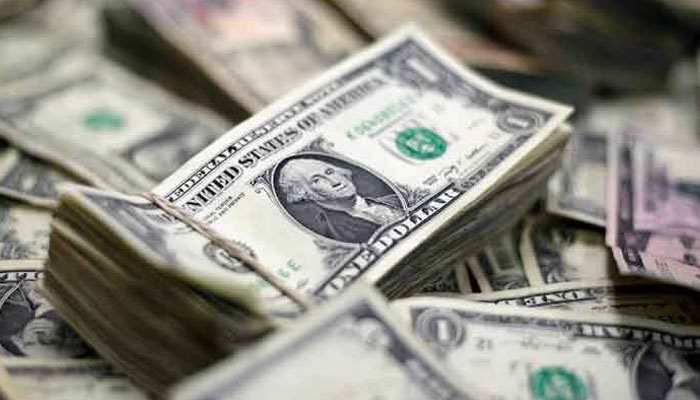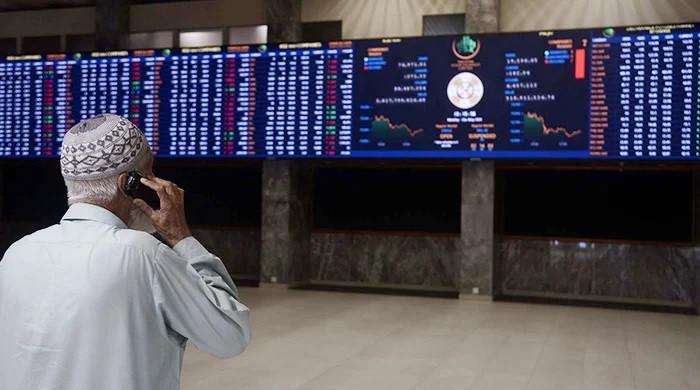Over $2.41bn in deposits obtained through Roshan Digital Accounts raised for forex reserves
The exchange rate depreciation has increased the cost of the deposited amount in the RDA by at least 10%
November 11, 2021

ISLAMABAD: A major chunk of over $2.41 billion deposits obtained through the Roshan Digital Accounts (RDA) was raised at the cost of around 20% for building up the foreign exchange reserves, it is learnt.
Pakistan’s exchange rate had witnessed a sharp decline in recent weeks and months and the rupee nosedived against the US dollar. It had just got some kind of breathing space when the Kingdom of Saudi Arabia announced to provide $4.2 billion for helping Pakistan’s struggling economy through the deposits of $3 billion and $1.2 billion for oil facility.
It helped to stabilise the exchange rate for the time being.
However, delays in reaching the staff-level agreement between Pakistan and the IMF have resulted into confusion over the economic horizon of the country.
Now, the SBP has been implementing a policy through the RDA in order to shore up the foreign currency reserves. The exchange rate depreciation has increased the cost of the deposited amount in the RDA by at least 10%. On the RDA, there is an offer of 11% on rupee term on a per annum basis for five years, so the total cost will be standing at 20 to 21%.
“There are budgetary costs as well, because the government will have to give mark-up upon the deposited amount into the RDA and the Ministry of Finance will have to bear the cost in the shape of fixed different rates of the mark-up,” top official sources confirmed to the publication.
This scribe sent questions to the SBP spokesperson and inquired that so far the received funds under the RDA stood at $2.4 billion with 11% mark-up plus 10% depreciation that was going to cost the national exchequer, so what’s the viewpoint of the SBP on this method to build up foreign currency reserves.
The spokesperson replied that until September’s end, Pakistan had received funds worth $2.41 billion through the Roshan Digital Accounts (RDA) from 175 different jurisdictions, adding around two-thirds of the funds received have been invested in Naya Pakistan Certificates (NPCs), which have different rates of return depending on the denomination (PKR, USD, GBP or Euro) and the tenure of the certificate (ranging from three months to five years).
He said the rest of the funds have either been consumed or are lying in noninterest or nominal interest-bearing accounts, adding the NPCs are the government bonds, primarily aimed at non-resident Pakistanis (NRPs), whose returns are paid out of the official foreign exchange reserves of the SBP. “Therefore, movements in the exchange rate do not affect their cost. In terms of benefits, the deposits through RDA improve Pakistan’s balance of payments position,” the spokesperson said.
He said they are not only strengthening the country’s forex reserves but also helping to increase the dollar supply in the market and finance the current account deficit.
Moreover, diversifying the channels for foreign currency inflows is highly desirable and this is an avenue that has generally been neglected in the past, he added.
He said Pakistan, historically, has heavily relied on remittances, which are primarily for family support and consumption and it is appropriate to offer NRPs opportunities to invest as well. Most countries with a large diaspora do this very successfully, he added.
When asked whether this amount of $2.4 billion would be utilised as below-the-line financing for the budget deficit for the current fiscal year or how much amount would be utilised for the financing of the budget deficit for the first quarter of the current fiscal year, the SBP spokesperson said that any decision regarding the use of funds received through the Naya Pakistan Certificates under the RDA is the prerogative of the Government of Pakistan.
To another query whether the SBP and the Ministry of Finance agreed on any mechanism for utilizing the exact portions for financing the budget deficit, the spokesperson said that it is the prerogative of the Ministry of Finance to decide about the utilisation of funds received through the RDA. The SBP has no role in it, he concluded.
Originally published in The News











